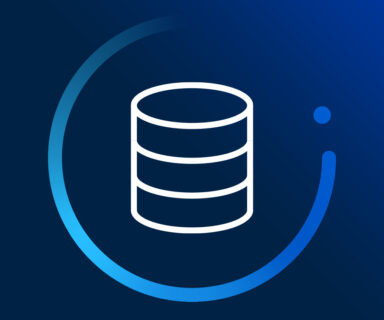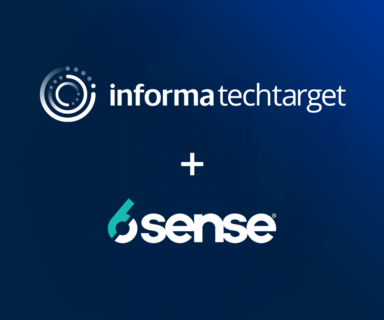 Intent-based marketing is a very important topic right now—it’s the first really promising application of big data in the B2B IT sales and marketing space. The basic idea is simple; it’s not necessarily new: By gaining better insight into impending purchases, we can focus marketing and sales efforts more effectively. Real insight into purchase intent means you can close business faster while spending less overall.
Intent-based marketing is a very important topic right now—it’s the first really promising application of big data in the B2B IT sales and marketing space. The basic idea is simple; it’s not necessarily new: By gaining better insight into impending purchases, we can focus marketing and sales efforts more effectively. Real insight into purchase intent means you can close business faster while spending less overall.
What makes purchase intent so exciting?
Real purchase intent means you have visibility into what you need to do, and when you need to do it. By studying online activity and then deriving actionable insights from it, you’re able to:
- Create real, attributable pipeline impact
- Better prioritize prospect and account targeting
- Synchronize brand and demand generation activities
- Optimize programmatic advertising campaigns
- Improve account-based and related strategic marketing approaches
If, that is what you want to do, the immediate next question is: Is any particular provider really going to help me accomplish this? That’s why I wanted to lay out here some of the critical information I’d want to know before jumping headlong into a serious intent-based marketing commitment.
The 4 Pillars of Intent-Based Marketing
While intent signals can be said to begin with search, there’s a lot more to do than just capturing what your prospects are searching for on Google. Realizing appreciable value from intent signals requires both obtaining the information you need and applying these buyer insights to your marketing processes. I think the key elements of intent enablement can be best understood as 4 distinct pillars — or building blocks — necessary for success.
1. Identity—Who Are Your Buyers?
 To make any significant progress, all marketers have to access databases of clean, complete, and accurate account/contact data. And a super critical element in this is the ability to source accurate identity information. We can obtain this via direct user input or data appends from outside sources, and then some sort of rigorous validation of the data records.
To make any significant progress, all marketers have to access databases of clean, complete, and accurate account/contact data. And a super critical element in this is the ability to source accurate identity information. We can obtain this via direct user input or data appends from outside sources, and then some sort of rigorous validation of the data records.
Consider this:
Many providers in the Identity pillar can source B2B contact and account data, but they often fail to tie these contacts to any relevant topics of interest. Many companies with a variety of methodologies are getting into the project intelligence business, yet without direct insight into relevant interest, their data collection and mining efforts don’t yet deliver a confidence level I would put major investment behind.
2. Interest—What Are Your Buyers Doing?
There are a number of ways of ascertaining buyer ‘interest’ information: from user activity channels (your website, third-party content publisher data, social networks, etc.).Many include some level of activity analysis (direct downloads, landing page engagement, outbound email response, IT install data, etc.). These are some of the better ways.
Consider this:
 The best providers in the Interest pillar differentiate themselves based on the source of their data. For some vendors, 1st party data is the main focus. Their data is gleaned from prospect-initiated inbound traffic to your website. This 1st party data is very valuable to marketers, the downside is that it is limited in scope. When you can’t gain insight from outside your website’s “range of vision” – outside of what your inbound funnel sucks in – you know you’re likely to be missing a significant portion of what’s going on in the market. You are trying to building a significantly larger audience than you currently attract. To accomplish this, you don’t want to limit yourself to what’s already coming in.
The best providers in the Interest pillar differentiate themselves based on the source of their data. For some vendors, 1st party data is the main focus. Their data is gleaned from prospect-initiated inbound traffic to your website. This 1st party data is very valuable to marketers, the downside is that it is limited in scope. When you can’t gain insight from outside your website’s “range of vision” – outside of what your inbound funnel sucks in – you know you’re likely to be missing a significant portion of what’s going on in the market. You are trying to building a significantly larger audience than you currently attract. To accomplish this, you don’t want to limit yourself to what’s already coming in.
Outside-party intent (both 2nd and 3rd party) can be further broken down into two categories—sourced (owned by someone else) and unsourced (scraped from the web using technology):
Some vendors of unsourced information crawl the open web trying to identify B2B intent activity. These techniques are in their infancy and still very weak. They have a hard time understanding the meaning of the signals they’re seeing. They’re prone to generating ‘false positives’ that lead us astray. For example, choose a topic like “flash storage”: Signals around this could indicate interest in anything from laptops to enterprise IT solutions or even “closet storage systems” from IKEA.
3rd party sourced solutions try to solve the unclear signals problem by leveraging well-defined audiences. However, simply identifying a good audience can’t necessarily deliver clear active buyer interest. Even suppliers who own their editorial content don’t necessarily provide the context or granularity needed to provide the relevance necessary to impact the performance of your outbound efforts. They may be able to give you broad topical interest, but without enough specific detail you will still generate a lot of waste. Much of your outbound will be missing wide.
3. Enrichment— Managing and Modeling Intent Data
In order to make intent data useful, you need to be able to interpret it and then organize it in ways that directly support what you need to accomplish. You need to profile and map the characteristics of your ideal customers; build out targeting pools based on probability models that predict what accounts are most likely to buy – including accounts already showing interest together with look-alike accounts; load these into your systems in alignment with your scoring methods and so on. Really critical here is making sure you have the contact information you need to have a hope of reaching the individuals who make up a real buying team.
Consider this:
Many providers offering profile modeling, prediction algorithms or other prioritization model potential intent on the account level only. Many can’t discover or append contacts for these accounts beyond the contacts that already exist in your system. That means you have to find other sources of that information. And while other sources can give me contacts, they usually won’t come with any strong connection to the variables the model has utilized. They won’t come with the necessary context. Some predictive vendors do supply additional data, but many source their account activity from sites that are either unknown or irrelevant. So while the models themselves can be based on good information, their power declines dramatically when the data available is itself relatively weak.
4. Activation—Acting on Purchase Intent Insight
To complete the intent cycle, you must use be able to use intent insights to drive change into your marketing activities. Obviously we can’t realize better results without acting somehow differently on new and better understanding. If we can get our hands on this information, we can use it wisely – for example, to optimize strategy, content and timing. You want to leverage insight to create more influence with your highest-priority accounts; Based on better visibility, you want to adjust account scoring and nurturing; you want to make your whole team more productive by standardizing on a common set of information – and you could even use the same concept to make reporting and attribution cleaner too.
Consider this:
The first major application of intent for marketing was programmatic advertising. That’s cool, but not as cool as it could be, because most providers of intent data for programmatic don’t in fact offer you any direct access to their secret sauce at all – you can leverage it only if you buy data-targeted banners through them. You can’t leverage the data they have in any other way – your programmatic guys give you no access to a data source you might be able to use to fuel pipeline-building activities.
The Challenges of Today’s B2B IT Data Intent Market
Because each addresses only a part of what you need to get better marketing done, all of the 4 pillars are necessary for successful intent-based marketing. To date, this requirement has been a significant barrier keeping successful intent-based marketing out of reach for most companies. Even now, while there are solutions that really work, the market is incredibly crowded with fragmented capabilities that only get you part of the way there.
It’s still far too easy to fall for sexy GUIs and slick marketing campaigns offering promises of potential that have no basis in proven performance. An appearance of sophistication without clarity on whether or not the fundamental data services underpinning it could ever hope to provide what you really need is a sure sign to keep your distance. In reality, most point solutions tend to focus on just one or two of the pillars. This leaves you to create a piecemeal intent-based marketing “system” as best you can on your own.
 If your data’s no good, you’re taking a real risk of getting into the latest “garbage in, garbage out” scenario. These won’t deliver any significant value improvement regardless of the great systems you may have in place to act on the new material. And if you have systems challenges, even the best insight – unless it is packaged in a way you can use — will be difficult for you to leverage against your objectives.
If your data’s no good, you’re taking a real risk of getting into the latest “garbage in, garbage out” scenario. These won’t deliver any significant value improvement regardless of the great systems you may have in place to act on the new material. And if you have systems challenges, even the best insight – unless it is packaged in a way you can use — will be difficult for you to leverage against your objectives.
Overcoming your Intent Marketing Challenges
The bottom line here is that purchase intent marketing success requires usable insight together with effective processes. If you can put everything together, it’s proving to be an excellent way to realize substantive benefits quickly and efficiently.
Given these realities, requirements and considerations, TechTarget offers a suite of purchase intent insight services featuring flexible access to clear and direct, contextual purchase signals from known accounts and contacts that you can use immediately. Beginning from validated, buyer-supplied identity information, adding observed activity against highly specific content, and modeling against our vast repository of performance learning, TechTarget produces the IT technology market’s clearest, most complete and usable purchase intent insight. Via TechTarget’s Priority EngineTM SaaS solution you get direct access to our audiences and everything we know about them. With Priority Engine, you gain the ability to leverage our intent insight through an analytics dashboard and directly into your marketing automation and CRM systems.
By comprehensively addressing all 4 pillars of data capability necessary for success, TechTarget provides a more useful approach to harnessing intent. We enable better results while saving you time and effort. This is why we already have more than 100 companies collaborating with us on purchase intent driven marketing today.
If you’d like to learn more about our suite of purchase intent-based offerings, please contact us today.




